Sight Fishing for Sailfish, Mahi, and More
Preparation and Presentation for Sight Fishing
Sight fishing is a common technique used for many species worldwide. This is a technique we incorporate into almost any Deep Sea Fishing Trip The best way for me to breakdown sight fishing is into different categories. The first step is having the correct rig and bait, which falls under the category of preparation. The second step is boat maneuvering. The third step is presentation, which is basically casting and bait selection. The fourth step and sometimes the most important one is fish behavior/ mood. This can make or break your day.
Always Be Prepared
The first step when sight fishing is preparation. This is an area that you have the most control over even if you lack experience. Always have multiple rods rigged and ready. If you are fishing from a flats boat, this may only be 1 or 2 rods. One may have 20lb fluorocarbon leader, 10lb braid, and a live shrimp on the end. Bonefish might be the main target but never put all your eggs in one basket. As a backup rod you may have 20lb braid, a circle hook, 30lb fluorocarbon, and a crab as bait. It is always easier to grab a different rod in a split second than it is to re-rig.
When live baiting it is important to have a rod in your hand and bait on the hook. Sight fishing sometimes provides split second opportunities. To capitalize, it is best to minimize steps. If I am sight fishing for sailfish or mahi-mahi for example, I expect no more than a 10 second delay from when I tell my mate to cast and I expect a bait to hit the water. This means having a rod rigged and bait already hooked up sitting in the live well.
.jpg)
Rig Multiple Rods
When fishing offshore, it helps to have multiple rods rigged. This is crucial for multiples while hooking as many as 5 fish at a time. You may be looking for tailing sailfish and see 10 straight fish that won’t eat. Out of nowhere one of the packs may have 5 or 10 fish. The crazy part: all those fish may eat. If this is the case, hook, pitch, and hold on. Have the anglers move their feet and you can put up serious numbers in a fraction the time. For mahi-mahi, multiples are the rule rather than the exception. We sometimes have as many as 10 spinners rigged and ready for dolphin.
Leader Selection While Sight Fishing
When it comes to presentation, bait selection and leader choice need to be spot on. When you are sight fishing, you see the fish but on many occasions, they see you. Fish that are targeted by sight fishing specifically are usually closer to the boat and more finicky. For tailing sailfish, we may use as light as 25lb fluorocarbon for leader. For mahi-mahi, we usually start with 60lb monofilament leader. If the fish are aggressive we may scale up leader. If they don’t want to eat, we sometimes tie hooks straight to the mainline.
For sailfish, heavy leader may mean 60lb monofilament. For dolphin, 80lb may be on the heavy side. For sailfish we use circle hooks. For dolphin, j-hooks seem to work best. Why change leader size you might ask? If you scale down leader it is obviously to have a stealthier presentation. When you scale up however, this allows you to use more drag and catch more fish on the same leader. This means less re-rigging and more successful de-hooking. The result is more fish in the box.
Bait Selection for Sight Fishing
For sailfish, spanish sardines are my favorite to cast at tailing fish. The only problem is you don’t always have a well full of sardines. Threadfin herring, big pilchards, and ballyhoo can also be deadly pitch baits. If the sailfish are pushing ballyhoo on the reef (showering), freshly caught “hook and line” ballyhoo (rather than cast netted) might be the ideal bait. If the fish are tailing and they are hungry, it may not matter what you pitch. Pilchards, threadfin herring, cigar minnows, and more might get eaten. It is important that you pitch lively bait and judge their behavior to know what they want. Most fish will “flare up” and change colors if they are interested in a bait. Sometimes this is more dependent on conditions and the feeding cycles of the fish you are targeting. Regardless, the best you can do is put some candy in front of them and hope they bite. We only take a few casts with each bait before swapping them out for a fresh one.

For dolphin, I prefer small blue runners over just about anything. Of course, they may not always be plentiful. As a general rule of thumb, I like to start with the bait that I have the most of. If I have 50 pilchards and a dozen small runners, I will probably pitch pilchards first. I’ll save the runners for fish that are picky or if we see a big bull. If you really want to conserve bait, you can hook up one fish on live bait before switching to chunks and jigs. Dead bait can give you a great hookup ratio without sacrificing live baits. It is always easier to switch the fish from dead to live bait than the other way around. Bait management is an art, especially when you fish every day. These tricks can help you catch more fish and spend less time and money on bait.
‹ Back












Comments